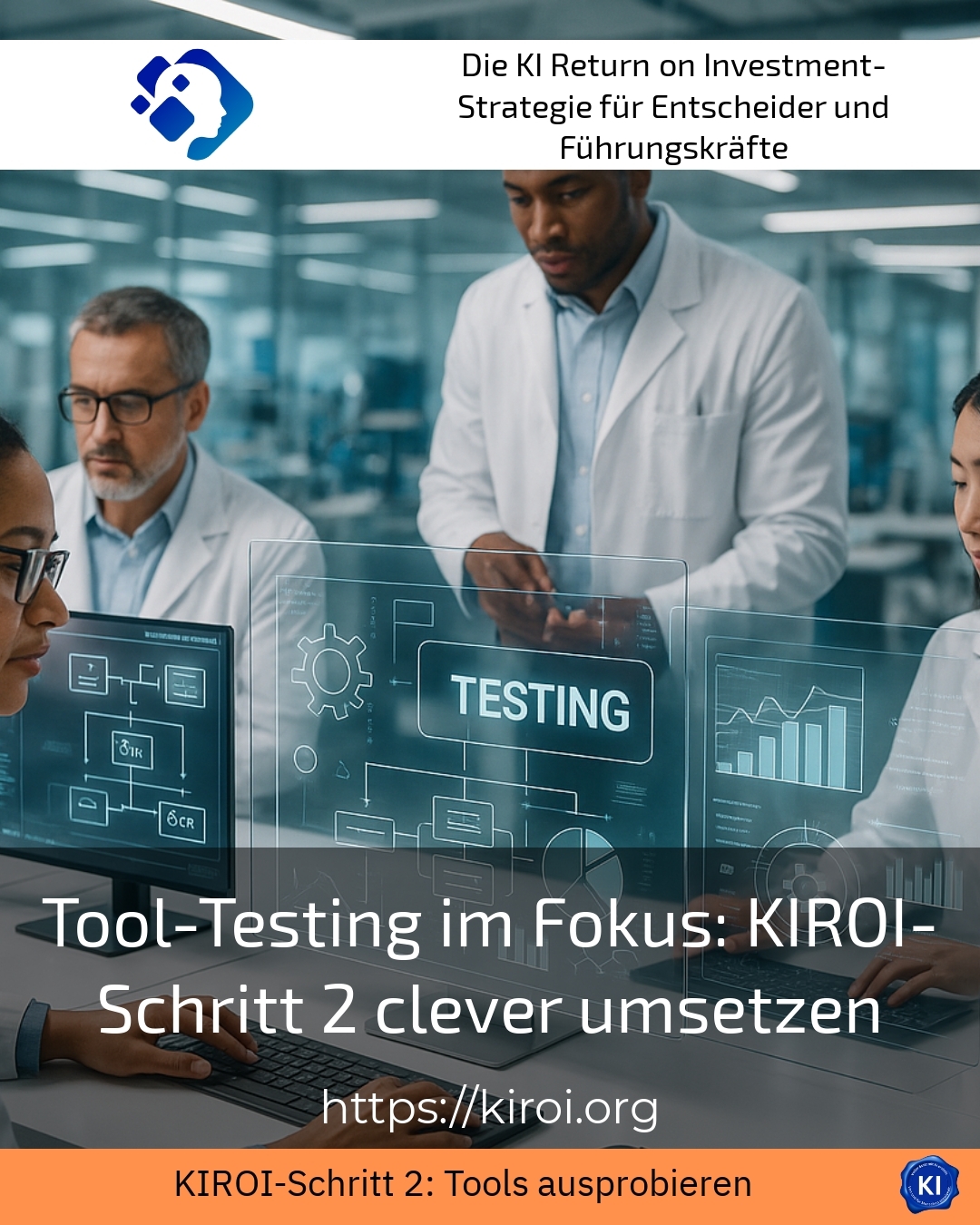Tool testing is becoming increasingly important in the context of agile project work, especially when it comes to using innovative digital tools effectively. The practice of tool testing helps teams to really understand suitable software solutions and integrate them optimally into their work processes. Within the KIROI system, the second step of tool testing is a particularly important phase for trialling the various AI tools in a meaningful and targeted way.
Focus on step 2: Tool testing as the key to increasing efficiency
Many companies report that the sheer variety of tools available can lead to confusion. That's why step 2 in the KIROI process focuses not just on familiarising yourself with tools, but on testing them in a targeted and systematic way. This gives you clarity about the strengths and weaknesses of the individual solutions and allows you to capitalise on them in a targeted manner. The results of the tool testing support the decision-making process and promote better integration of the newly introduced technologies.
For example, a publishing house uses tool testing to compare different text generation tools. This showed that some tools save time, especially when it comes to researching and creating raw text. At the same time, other tools were favoured when it came to creative elaboration and individual adaptations. Practical experience like this is incorporated into the selection of the best tool, which is ultimately used productively.
Tool testing also helps to find the optimum software for quality control in the field of image processing. Industries such as automotive production or electronics manufacturing benefit from this because they can reliably recognise error patterns and thus reduce rejects. The active use and evaluation of different tools is essential here to ensure the best price-performance ratio and easy integration into existing systems.
Finally, examples from customer service show how testing phases for chatbots or virtual assistants provide valuable insights. Teams find that regular testing and iterative customisation noticeably improve service quality and also enhance the user experience for customers.
KIROI best practice from the field
BEST PRACTICE with one customer (name hidden due to NDA contract) was a medium-sized industrial company that was evaluating various AI-based analysis tools for its production lines as part of tool testing. The support helped to determine relevant evaluation dimensions and define suitable scenarios. In the end, the company was able to identify the best solution, which, in addition to error detection, also impressed with its simple integration into the ERP system and thus significantly improved process quality.
Structured approach to tool testing for sustainable success
A successful test of the tool starts with clearly defined objectives. Consider which functions offer real added value and in which context the tool is to be used. For example, you can specifically test automatic lead evaluations in sales or evaluate the personalisation of campaign functionalities in marketing. A structured and planned test phase prevents inefficient procedures.
In the second step, it is advisable to involve various stakeholders at an early stage, including specialist departments and future users. This gives you a variety of perspectives and allows you to define practical criteria. Interdisciplinary feedback also improves the acceptance of the selected solutions within the company.
Documenting the test results is another key factor. You should not only record strengths and weaknesses, but also present the integration effort, costs and possible risks in a transparent manner. Well-managed test documentation facilitates subsequent decisions and supports communication within the team.
Practical examples from various industries
In logistics, for example, tool testing enables AI-supported demand forecasts and route planning to be optimised. Companies report more precise resource planning and the associated cost savings. In marketing, the evaluation of automation tools provides valuable information on which solutions can be flexibly adapted to different campaign objectives.
Customer service also benefits as chatbots are improved through continuous testing in order to respond more quickly to enquiries and increase user-friendliness. The benefits of a well-organised test phase are particularly evident when the volume of enquiries is high.
Tool testing is also very important in the area of IT security. Companies test various solutions for analysing vulnerabilities and select tools that offer a balanced mix of detection rate and user-friendliness.
My analysis
To summarise, it can be said that structured and targeted tool testing as part of KIROI step 2 is an essential success factor for the successful introduction of new software-supported solutions. It not only enables a well-founded selection from numerous tools, but also supports the subsequent implementation with well-founded findings. Companies that carefully accompany this process benefit from optimised processes, greater efficiency and better use of their resources.
Further links from the text above:
KIROI step 2 - Try out AI tools efficiently now
Tool tests for decision-makers: How KIROI step 2 works
How to create and manage test cases with Xray and Jira
For more information and if you have any questions, please contact Contact us or read more blog posts on the topic Artificial intelligence here.















